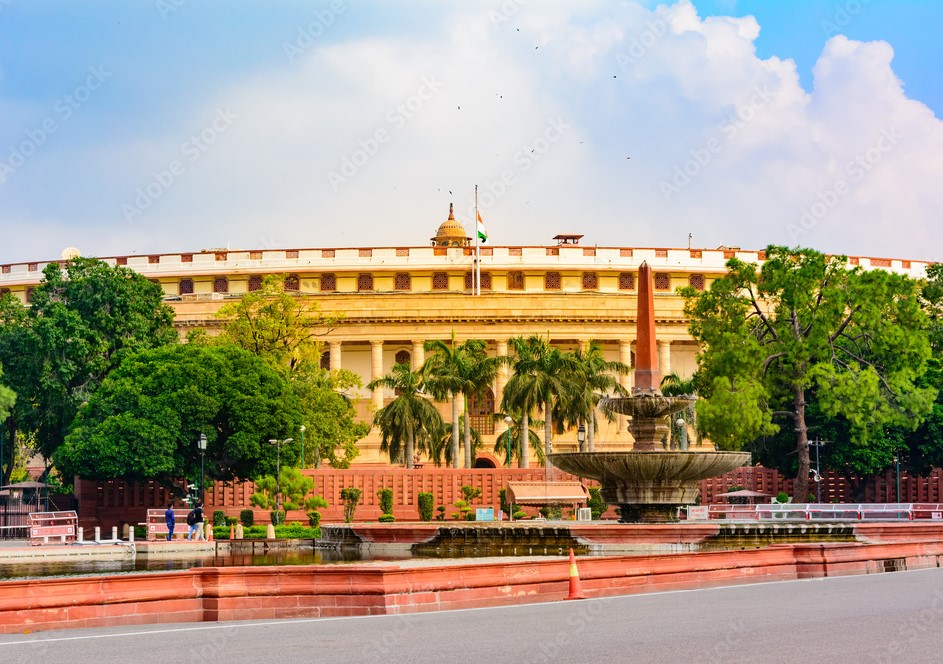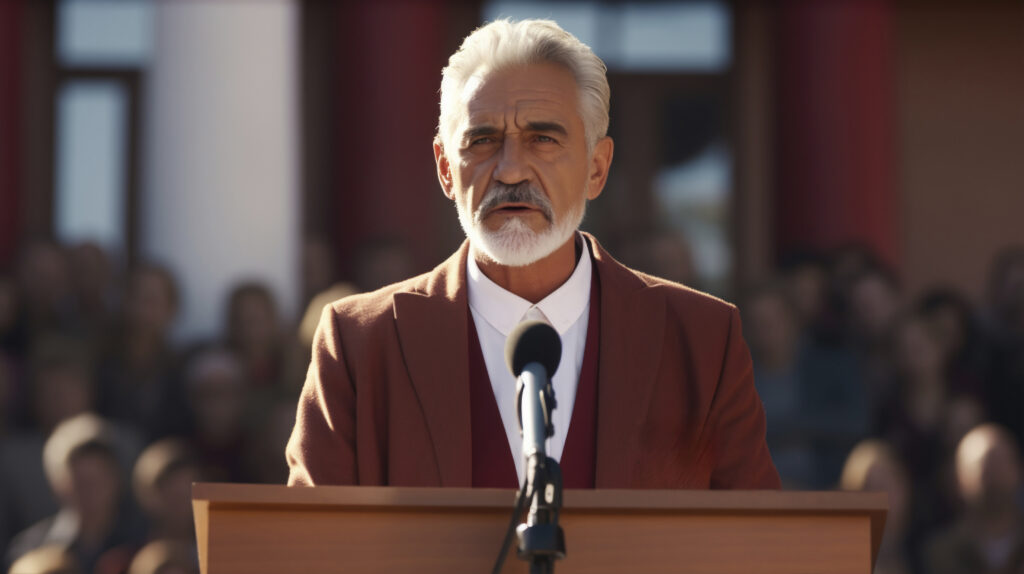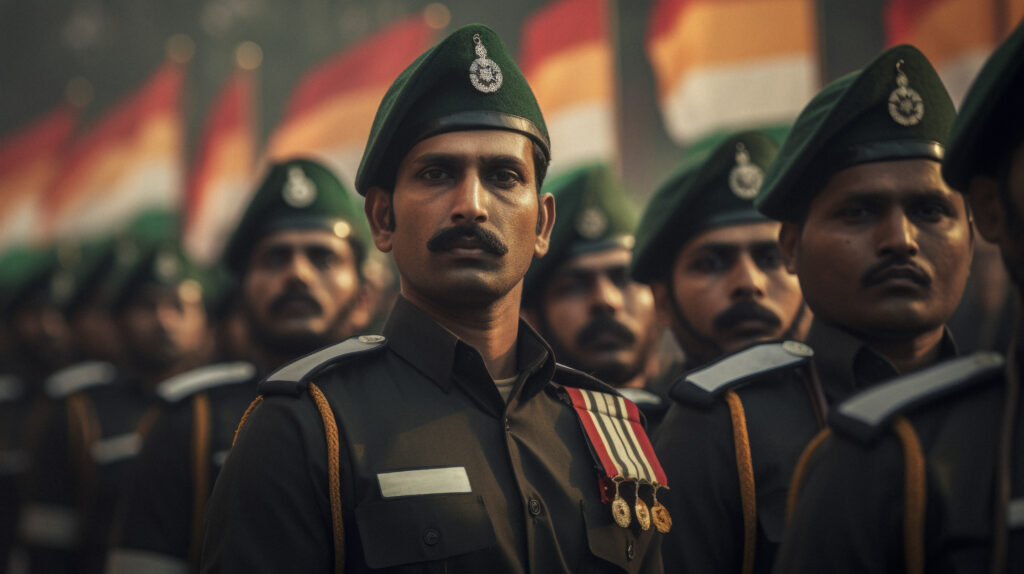Upsc insights
Welcome to my UPSC learning space — where I share clear, concise, and thoughtful blogs on Polity, History, Geography, and Economics. Learn, revise, and stay inspired for your civil services journey.
Welcome to my UPSC learning space — where I share clear, concise, and thoughtful blogs on Polity, History, Geography, and Economics. Learn, revise, and stay inspired for your civil services journey.
Welcome to my UPSC learning space — where I share clear, concise, and thoughtful blogs on Polity, History, Geography, and Economics. Learn, revise, and stay inspired for your civil services journey.

Executive in India is the branch of government responsible for the implementation of laws and policies adopted by the legislature. In India, the executive is a crucial pillar of democracy, shaping the everyday lives of millions of people. The executive is one of the three branches of government, the other two being the legislature and the judiciary. Think of the executive as the branch that gets things done. While the legislature makes the laws, and the judiciary interprets them, it’s the executive that ensures these laws are put into action.Executive’s actions, decisions, and policies should respect and uphold the fundamental rights. But what exactly does the executive in India do? How is it structured, and why does it matter? Let’s dive into these questions and more.

India’s executive is divided into two main levels: the Central (or Union) Executive and the State Executive. Both play unique and vital roles in governance.
At the national level, the executive comprises the President, the Vice President, the Prime Minister, and the Council of Ministers.
Similarly, at the state level, there is a Governor, a Chief Minister, and a Council of Ministers. This structure mirrors the central executive but operates within the states’ jurisdiction. The main difference is that governor is appointed by president while in central executive president is elected by indirect electoral process. This process involves an Electoral College consisting of elected members from both Houses of Parliament (the Lok Sabha and the Rajya Sabha) and the elected members of the Legislative Assemblies of States and Union Territories.
Who implements the decisions of the ministers? Remember, executives are not just about ministers but also the administration described as civil servants which plays an important role in execution of laws. They assist the ministers in formulating policies and implementing these policies. They are appointed by the central government but work under the state government at district level. This executives are called permanent executive. Though they are appointed by the central government but they should have an impartial nature when working under state government because there can be a chance of different ruling party at state and central level.
The elected representatives and the ministers are the political executive.

The President of India is often seen as the ceremonial head of state. While the President does have certain powers, these are mostly exercised on the advice of the Prime Minister and the Council of Ministers. The president also have some Discretionary Power as well. The President’s role include:
The Prime Minister is the real executive head in India. Elected as the leader of the majority party in the Lok Sabha (the lower house of Parliament), the Prime Minister is responsible for running the government and making policy decisions. The Prime Minister’s influence and power are pivotal to the functioning of the executive.
The Council of Ministers, headed by the Prime Minister, includes Cabinet Ministers, Ministers of State, and Deputy Ministers. This team works together to formulate and implement policies, with each minister handling a specific portfolio like finance, defense, or education.
In the Indian administrative system, the “Permanent Executive” refers to the civil services, which are a crucial part of the executive branch of the government. Unlike the political executive (which changes with elections), the permanent executive consists of career bureaucrats who ensure continuity and stability in governance. Let’s delve into the structure of the permanent executive in India.

The permanent executive is primarily composed of civil servants who are appointed through competitive examinations and serve in various capacities throughout their careers. The major civil services in India include:
To prevent misuse of power, there are checks and balances in place. The judiciary can review executive actions, and the legislature can question and hold the executive accountable. This system ensures that one branch do not becomes too powerful.
The executive is vital for translating legislative decisions into tangible outcomes. Its role in implementing laws, managing resources, and ensuring national security is fundamental to the health and stability of a democracy.. It administers public services, enforces regulations, and oversees foreign relations and defense. . In essence, the executive is central to the effective functioning of democracy and the delivery of public services in India.
The executive in India is a cornerstone of the nation’s democratic framework. Its effective functioning ensures that laws are implemented, policies are carried out, and public services are delivered. Understanding the executive’s structure, roles, and challenges helps us appreciate its importance in our daily lives.
1. What is the main role of the executive in India?
The main role of the executive in India is to implement and enforce laws, formulate policies, and manage public administration and services.
2. Who holds the real power in the executive branch of India?
The Prime Minister holds the real power in the executive branch, being the head of the government and the leader of the Council of Ministers.
3. How does the executive work with the legislature?
The executive works with the legislature to formulate laws. While the legislature creates laws, the executive ensures their implementation and enforces them.
4. What are the checks and balances on the executive?
Checks and balances on the executive include judicial review of executive actions and legislative oversight through questioning and accountability mechanisms.
5. What challenges does the executive in India face?
The executive faces challenges such as political pressure, bureaucracy, corruption, and the need for efficient public service delivery. Addressing these challenges is key to effective governance.
[…] Boundaries: Fundamental Rights place constitutional limits on the actions of the Executive (which includes the President, Prime Minister, Council of Ministers, and other government […]
India’s executive system is well-structured to ensure effective governance at both central and state levels. The role of the Prime Minister as the real executive head highlights the importance of leadership in policy-making. The Council of Ministers plays a crucial role in handling various portfolios, ensuring smooth administration. The Permanent Executive, consisting of civil servants, provides stability and continuity in governance. How does the appointment process of the Governor impact the balance of power between the central and state executives?
The structure of India’s executive branch is quite comprehensive, reflecting the country’s federal system. It’s interesting how the roles at the central and state levels are distinct yet interconnected. The importance of the Prime Minister in driving policy decisions cannot be overstated, showcasing the centralization of power in this role. Additionally, the concept of the Permanent Executive ensures stability, which is crucial for consistent governance. How does the appointment process for civil servants impact the efficiency and neutrality of the permanent executive?
India’s executive structure is indeed fascinating, with its clear division between the Central and State levels. The roles of the President, Prime Minister, and Council of Ministers at the national level seem well-defined, but I wonder how much influence the President truly has compared to the Prime Minister. The appointment of the Governor by the President is an interesting dynamic—does this ever lead to conflicts between the state and central governments? The concept of the Permanent Executive, with its focus on continuity through civil services, is commendable, but how effective is it in practice when dealing with rapid political changes? I’d love to hear more about how the Permanent Executive maintains its neutrality and efficiency. What challenges do civil servants face in balancing political directives with administrative responsibilities? Overall, the system seems robust, but I’m curious about its adaptability in the face of modern governance demands.
India’s executive structure is quite intricate, with clear distinctions between the Central and State levels. The roles of the President, Prime Minister, and Council of Ministers at the national level seem well-defined, but I wonder how much influence the President truly has compared to the Prime Minister. The appointment of the Governor by the President is interesting—does this create a balance of power or potential conflicts between the Centre and the States? The Permanent Executive, with its career bureaucrats, ensures stability, but how does it adapt to changing political landscapes? I’m curious about the challenges faced by civil servants in maintaining neutrality while working under different political executives. What are your thoughts on the effectiveness of this dual executive system in India? Do you think it strikes the right balance between political leadership and administrative continuity?
The structure of India’s executive branch is quite intricate and well-organized, reflecting the country’s federal system. It’s fascinating how the roles of the President, Prime Minister, and Council of Ministers are clearly defined, ensuring a balance of power. The distinction between the political and permanent executive is particularly interesting, as it highlights the importance of stability in governance. The role of the Governor in the state executive seems crucial, especially since they are appointed by the President. The Prime Minister’s position as the real executive head underscores the significance of leadership in policy-making. The civil services, as part of the permanent executive, play a vital role in maintaining continuity in administration. How does the process of appointing civil servants through competitive examinations ensure meritocracy and efficiency in the Indian administrative system?
The structure of India’s executive branch is quite intricate, with clear distinctions between the Central and State levels. It’s fascinating how the roles of the President, Prime Minister, and Council of Ministers are defined to ensure smooth governance. The appointment process for the Governor by the President adds an interesting layer to the state-level administration. The Prime Minister’s role as the real executive head highlights the importance of leadership in policy-making and government functioning. The inclusion of the Permanent Executive, consisting of career bureaucrats, ensures stability and continuity in governance. However, I wonder how the dynamic between the political and permanent executives is managed to avoid conflicts. What measures are in place to ensure that the permanent executive remains impartial and efficient in its duties?
It’s fascinating to see how India’s executive structure is so meticulously divided into central and state levels, each with its own distinct roles. The balance between the President, Prime Minister, and the Council of Ministers seems well thought out, ensuring smooth governance. I find it particularly interesting how the Governor is appointed by the President, while the President is elected indirectly—this adds a unique layer to the system. The role of the Prime Minister as the real executive head highlights the importance of leadership in driving policy decisions. The concept of the Permanent Executive, with career bureaucrats ensuring stability, is a brilliant way to maintain continuity despite political changes. How do you think this structure compares to other democratic systems around the world? Do you believe the indirect election of the President is more effective than a direct election? I’d love to hear your thoughts on this!
Interesting read! The division of India’s executive into Central and State levels seems well-structured, ensuring both national and regional governance. The role of the Prime Minister as the real executive head highlights the importance of leadership in policy-making. The distinction between the political and permanent executive is crucial for maintaining stability amidst changing governments. However, I wonder how the appointment of the Governor by the President affects the autonomy of state governance. Do you think this system effectively balances power between the central and state governments? Also, how do civil servants ensure continuity without being influenced by political changes? Would love to hear your thoughts on this!
The structure of India’s executive system is quite intricate, with clear distinctions between the Central and State levels. It’s fascinating how the roles of the President, Prime Minister, and Council of Ministers are defined to ensure smooth governance. The appointment process of the Governor by the President, as opposed to the indirect election of the President, adds an interesting layer to the system. The Prime Minister’s role as the real executive head highlights the importance of political leadership in shaping policies. The inclusion of the Permanent Executive, with its focus on continuity through civil services, ensures stability despite political changes. However, I wonder how the balance of power between the political and permanent executives is maintained in practice? Do you think the current system effectively addresses the challenges of governance in such a diverse country?
This text provides a comprehensive overview of India’s executive structure, highlighting the roles of both the Central and State Executives. It’s interesting how the Prime Minister holds such pivotal power, essentially steering the nation’s policies and governance. The distinction between the political and permanent executives is crucial, as it ensures stability amidst political changes. The role of the civil services in maintaining continuity is often underappreciated but vital for effective governance. I wonder how this system compares to other democratic nations—are there lessons to be learned or improvements to be made? Also, how does the process of appointing a Governor by the President influence the balance of power between the central and state governments? This structure seems effective, but does it ever lead to conflicts or inefficiencies in practice?
The structure of India’s executive branch is quite intricate, with clear distinctions between the Central and State levels. It’s interesting how the President and Governor roles differ in their appointment processes, yet both are crucial for governance. The Prime Minister’s role as the real executive head highlights the importance of political leadership in shaping policies. The Council of Ministers seems to function as a well-coordinated team, each handling specific portfolios to ensure effective governance. The concept of the Permanent Executive, with career bureaucrats ensuring stability, is a unique aspect of India’s administrative system. It’s fascinating how the political and permanent executives complement each other to maintain continuity. How do you think the balance between political and permanent executives impacts the efficiency of governance in India? Would love to hear your thoughts!
The structure of India’s executive branch is quite intricate and well-organized, reflecting the country’s federal system. It’s fascinating how the roles of the President, Prime Minister, and Council of Ministers are clearly defined, ensuring a balance of power. The distinction between the political and permanent executive is particularly interesting, as it highlights the importance of continuity in governance. The role of the Governor in the state executive, appointed by the President, adds another layer of complexity to the system. The Prime Minister’s pivotal role in policy-making and governance underscores the significance of leadership in the executive branch. The civil services, as part of the permanent executive, play a crucial role in maintaining stability and implementing policies effectively. How does the process of appointing civil servants through competitive examinations ensure meritocracy and efficiency in the administration?
India’s executive structure is quite intricate, with clear distinctions between the Central and State levels. It’s fascinating how the President and Governor roles differ in their appointment processes, yet both are crucial for governance. The Prime Minister’s role as the real executive head highlights the importance of political leadership in shaping policies. The Council of Ministers seems like a well-organized team, each handling specific portfolios to ensure smooth administration. The concept of the Permanent Executive, with career bureaucrats, ensures stability despite political changes. However, I wonder how the balance of power between the political and permanent executives is maintained in practice? Do you think the current system effectively addresses the challenges of governance in such a diverse country?
India’s executive structure is quite intricate, with clear divisions between the central and state levels. The roles of the President, Vice President, Prime Minister, and Council of Ministers at the national level are well-defined, mirroring the Governor, Chief Minister, and State Council of Ministers at the state level. I find it particularly interesting how the Governor is appointed by the President, whereas the President is elected indirectly through an Electoral College. This dual process seems to balance power effectively. The Prime Minister’s role as the real executive head highlights the importance of the Lok Sabha in shaping national policy. The concept of a Permanent Executive, consisting of career bureaucrats, adds a layer of stability amidst political changes. How do these civil servants navigate the transition between different political administrations?
various departments and ministries of the government. These civil servants are responsible for the day-to-day administration and implementation of policies and government programs. Their role is crucial because they handle the technical and operational aspects of governance, ensuring that policies are executed efficiently and effectively.
The Indian civil service is divided into various administrative services, including the Indian Administrative Service (IAS), Indian Police Service (PS), Indian Revenue Service (IRS), and other specialized services. These services are responsible for the administration of the country at both the central and state levels.
**Key Components of the Permanent Executive:**
1. **Indian Administrative Service (IAS):** IAS officers are responsible for the administration and management of government departments and programs. They work in various ministries, departments, and districts, overseeing public policy and its implementation.
2. **Indian Police Service (IPS):** IPS officers are responsible for maintaining law and order, investigating crimes, and ensuring the security of the citizens. They work closely with the police forces in the states and are involved in various aspects of law enforcement.
3. **Indian Revenue Service (IRS):** IRS officers are responsible for the administration of tax policies and customs duties. They work in the Central Board of Direct Taxation (CBDT) and the Central Board of Excises and Customs (CBEC), ensuring that revenues are collected efficiently and effectively.
4. **Other Specialized Services:** There are various other services like the Indian Foreign Service (IFS), Indian Statistical Service (ISS), and others that handle specialized and specific areas of governance.
**Functions of the Permanent Executive:**
– **Policy Implementation:** Civil servants are responsible for the implementation of policies and programs outlined by the political executive.
– **Administration:** They manage the day-to-day operations of government departments and ministries.
– **Maintenance of Law and Order:** IPS officers ensure the safety and security of citizens by enforcing laws.
– **Revenue Collection:** IRS officers are involved in the collection of taxes and duties, ensuring that the government has the necessary funds to operate.
**Conclusion:**
The Permanent Executive plays a vital role in the functioning of the Indian government. By ensuring the continuity and stability of governance, civil servants are essential to the effective administration and management of the country. They work closely with the political executive to ensure that policies are implemented and public services are delivered efficiently.
India’s executive structure is indeed fascinating, with its clear division between the Central and State levels. The roles of the President, Prime Minister, and the Council of Ministers highlight the balance of power and responsibility in governance. It’s interesting how the Governor is appointed by the President, while the President is elected through an indirect process involving the Electoral College. The Prime Minister’s role as the real executive head underscores the importance of leadership in policy-making and government functioning. The Council of Ministers, with its diverse portfolios, ensures that various sectors receive focused attention. The concept of the Permanent Executive, with career bureaucrats providing stability, is crucial for continuity in governance. How do you think the balance between the political and permanent executive impacts the efficiency of governance in India?
Wir haben libersave in unser regionales Gutscheinsystem eingebunden. Es ist toll, wie einfach man verschiedene Anbieter auf einer Plattform bündeln kann.
The structure of India’s executive branch is quite intricate and well-organized. The division between the Central and State Executives ensures that governance is balanced and efficient. It’s interesting to note how the President and the Governor play symbolic roles while the Prime Minister and Chief Minister hold the actual power. The indirect election process for the President seems complex but ensures a fair representation from various levels of government. The role of the Council of Ministers is crucial, as they handle specific portfolios and work collectively to implement policies. The concept of the “Permanent Executive” adds a layer of stability by having career bureaucrats who remain unaffected by political changes. How do you think the role of the civil services impacts the overall efficiency of the government? Would you say the current system is optimal or are there areas that need improvement?
Wir haben libersave in unser regionales Gutscheinsystem eingebunden. Es ist toll, wie einfach man verschiedene Anbieter auf einer Plattform bündeln kann. Whith regards, EUREX
It’s fascinating how India’s executive branch is structured with such clarity and division of roles. The distinction between the Central and State Executives ensures governance is both centralized and localized, addressing national and regional needs effectively. The Prime Minister’s role as the real executive head highlights the importance of leadership in policy-making and administration. The concept of the Permanent Executive, with career bureaucrats ensuring stability, is a brilliant way to maintain continuity despite political changes. However, I wonder how the appointment of Governors by the President impacts state autonomy. Do you think this structure allows for a balanced distribution of power between the central and state governments? Additionally, how do civil servants navigate the challenges of serving under different political leaders?
Wir haben libersave in unser regionales Gutscheinsystem eingebunden. Es ist toll, wie einfach man verschiedene Anbieter auf einer Plattform bündeln kann. Whith regards, WSFTD
This is an interesting breakdown of India’s executive structure! I’ve always wondered how the roles of the President and Prime Minister differ in practice, especially since the Prime Minister seems to hold more power. It’s fascinating how the state-level governance mirrors the central system, yet the appointment processes differ significantly. Do you think this dual structure helps or complicates governance in a country as diverse as India? Also, the concept of a “Permanent Executive” seems crucial for stability, but how does it interact with the political shifts during elections? I’d love to hear more about real-life examples or challenges faced by this system. What are your thoughts on how effectively this structure addresses the needs of such a vast population?
By the way, we’ve integrated libersave into our regional voucher system. It’s amazing how it simplifies bundling various providers on a single platform! Whith regards, GODZI